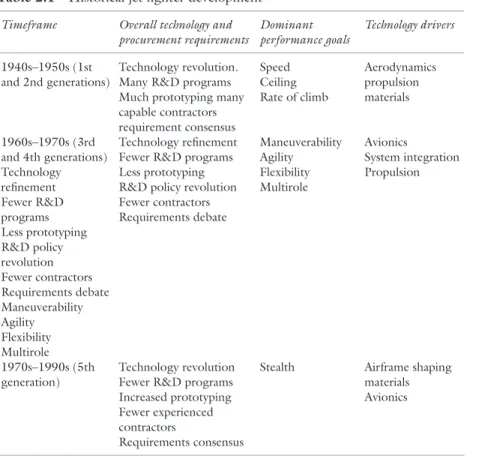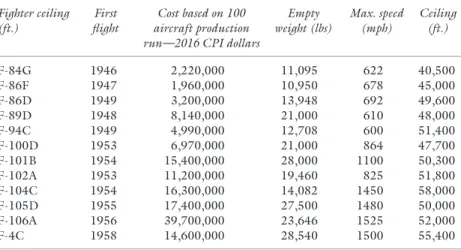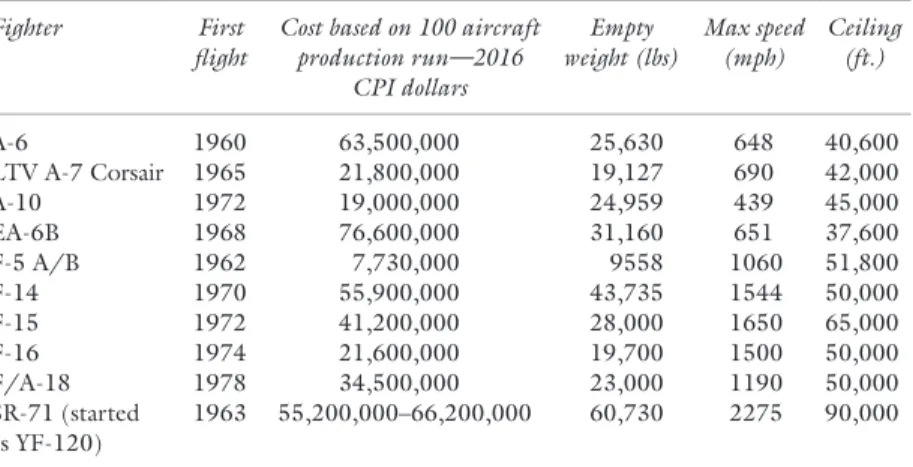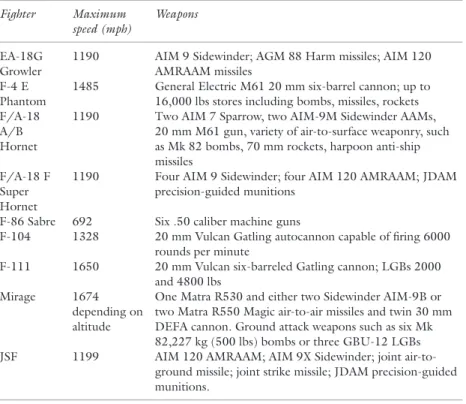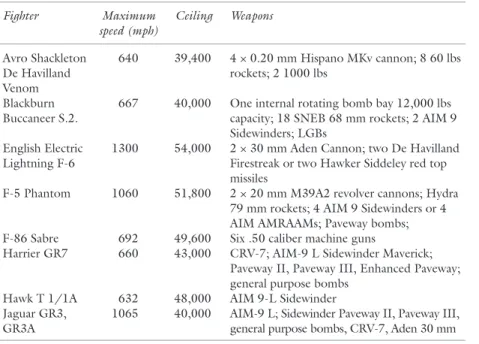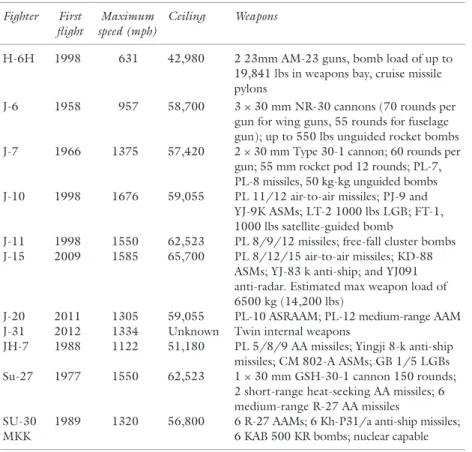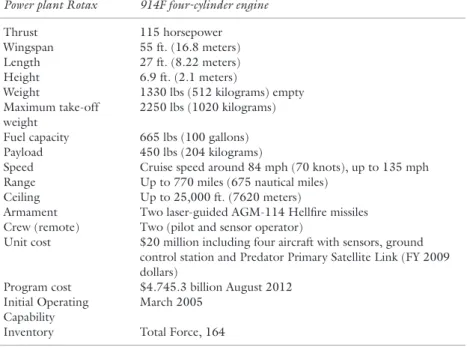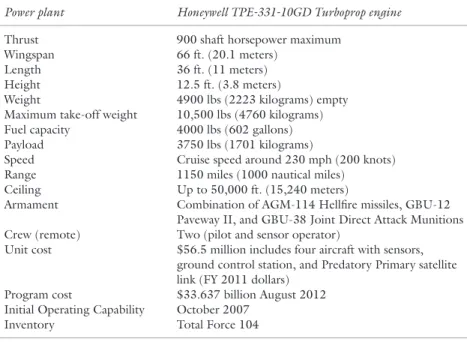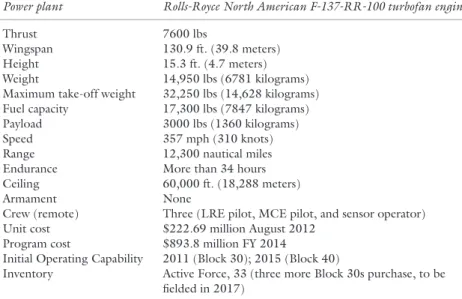Global Defense
Procurement and the F-35 Joint Strike Fighter
BERT CHAPMAN
Joint Strike Fighter
Global Defense
Procurement and the F-35 Joint Strike
Fighter
ISBN 978-3-030-01366-0 ISBN 978-3-030-01367-7 (eBook) https://doi.org/10.1007/978-3-030-01367-7
Library of Congress Control Number: 2018962977
© The Editor(s) (if applicable) and The Author(s), under exclusive licence to Springer Nature Switzerland AG 2019
This work is subject to copyright. All rights are solely and exclusively licensed by the Publisher, whether the whole or part of the material is concerned, specifically the rights of translation, reprinting, reuse of illustrations, recitation, broadcasting, reproduction on microfilms or in any other physical way, and transmission or information storage and retrieval, electronic adaptation, computer software, or by similar or dissimilar methodology now known or hereafter developed.
The use of general descriptive names, registered names, trademarks, service marks, etc. in this publication does not imply, even in the absence of a specific statement, that such names are exempt from the relevant protective laws and regulations and therefore free for general use.
The publisher, the authors and the editors are safe to assume that the advice and information in this book are believed to be true and accurate at the date of publication. Neither the publisher nor the authors or the editors give a warranty, express or implied, with respect to the material contained herein or for any errors or omissions that may have been made. The publisher remains neutral with regard to jurisdictional claims in published maps and institutional affiliations.
Cover image: © Colin Anderson / Photodisc / Getty Images
This Palgrave Macmillan imprint is published by the registered company Springer Nature Switzerland AG
The registered company address is: Gewerbestrasse 11, 6330 Cham, Switzerland West Lafayette, IN, USA
Mildred S. Chapman (1926–2017).
vii Writing a book of this detail has been a time-consuming endeavor. Working at Purdue University Libraries, I am truly grateful to have supportive and collegial colleagues who understand the complexities and frustrations involved in writing a scholarly book. It is a blessing to work at a research library with a strong and enduring commitment to providing scholars from all disciplines with access to so many research and data resources.
I want to give particular thanks to my supervisor Professor Erla Heyns and Professor J.P. Herubel who have encouraged me to keep “plugging away” at this endeavor and reassuring me it would eventually be accom- plished. Additional gratitude goes to Purdue History Professor Michael Smith, who was a constant source of support and encouraged me to try Palgrave Macmillan as a publisher.
Anca Pusca, Katelyn Zingg, Hemalatha Arumugam, Vinoth Kuppan, Dana De siena, and Leoselvakumar Periyanayagam have been consum- mate professionals in guiding me through Palgrave’s publishing policies and procedures and making constructive suggestions for enhancing manu- script quality. This work has also been enhanced by the suggestions of its peer reviewers. I appreciate the permissions granted by the American Enterprise Institute, Center for Strategic and International Studies, and Lockheed Martin to use maps and photographs in this work. Sarah Reifel of Purdue’s Roland Parrish Library provided very helpful graphic design input. Colin Anderson deserves credit for the powerful cover image.
I am also grateful for the encouragement of family and friends. My brother Brent and brother-in-law Mark Gick are always interested in my scholarly investigations, with Mark being particularly enthusiastic about
aviation matters. The love and understanding of my wife Becky is an eter- nal source of blessing and joy. She has traveled with me to sites such as the Royal Air Force Museum and National Museum of the US Air Force to share my infatuation with the JSF and endured my seemingly incessant talk about this aircraft and its impact.
I’m sorry my parents did not live long enough to see this project reach completion. Albert T. Chapman was a Marion, IN, high school chemistry teacher whose interests went far beyond science and who positively impacted family, students, colleagues, fellow church members, and a wide network of individuals. My mother Dr. Mildred S. Chapman died on September 20, 2017. She heard me talk about this project often and I wish she could have lived long enough to see its culmination. She served as a Taylor University Education and English Professor, and was acutely inter- ested in my writing, and helped endow me with a commitment to detail and presenting the highest-quality professional work and personal con- duct. This work is dedicated to both of my parents and honoring their enduring legacy.
ix
1 Introduction 1
2 History of Jet Fighters 11
3 Emerging Military Aviation Trends and Potential US
Aerospace Adversaries 45
4 JSF and the United States 89
5 JSF and Australia 165 6 JSF and Canada 199
7 JSF and the United Kingdom 235
8 JSF and Denmark, Israel, Italy, and Japan 271 9 JSF and the Netherlands, Norway, Singapore, South
Korea, Taiwan, and Turkey 305
10 Conclusion 345 Glossary 371 Index 379
xi Fig. 3.1 China air and naval assets by region. Source: U.S. Department
of Defense 2015 54
Fig. 3.2 China conventional strike capabilities or maximum missile
range. Source: U.S. Department of Defense 2016 55 Fig. 3.3 Known Iranian nuclear sites. Source: Hassan, Congressional
Research Service 57
Fig. 3.4 North Korean air forces. Source: U.S. Department of Defense,
“Military and Security Developments,” 2015 61 Fig. 3.5 Russia oil and gas operations. Source: Davies and Mugg,
American Enterprise Institute 63
Fig. 3.6 Russian strategic rocket forces. Source: Defense Intelligence Agency 65 Fig. 3.7 Russian air forces air bases. Source: Defense Intelligence
Agency. Note: Moscow maintains aviation units in Armenia and Kyrgyzstan, represented on the map by the two fighter
base symbols outside Russia’s borders 65 Fig. 6.1 Map of Russian Military Bases and SAR Centers in the Artic.
Source: Conley and Rohloff, CSIS 214
Fig. 8.1 Israel’s Minister of Defense Avigdor Liberman in the cockpit of the F-35A Lighting II, June 22, 2016. Source: Lockheed
Martin 2016 283
Fig. 10.1 Joint strike fighter budgeted development and procurement costs by service. Source: U.S. Government Accountability
Office 2017 346
xiii Table 2.1 Historical jet fighter development 13 Table 2.2 US jet fighters deployed between 1946 and 1958 14 Table 2.3 US jet fighters purchased during the 1960s and 1970s 15 Table 2.4 US jet fighters purchased in the 1980s and 1990s 17 Table 2.5 RAAF jet fighters purchased during the jet age 19 Table 2.6 Historic and recent RAF jet fighter purchases 20
Table 2.7 RCAF jet fighter purchases 22
Table 2.8 Chinese Air Force and Navy jet fighters 23
Table 2.9 Soviet/Russian jet fighters 24
Table 3.1 Predator UAV operational capabilities 48 Table 3.2 Reaper UAV operational capabilities 49 Table 3.3 Global Hawk operational capabilities 49 Table 3.4 2015 China aircraft within range of Taiwan 52 Table 3.5 North Korean short-range ballistic missile (SRBM)
capabilities 58 Table 3.6 North Korean intermediate/medium-range ballistic missile
(IR/MRBM) capabilities 59
Table 3.7 North Korean intercontinental ballistic missile (ICBM)
capabilities 60
Table 3.8 Russian SRBM capabilities 64
Table 3.9 Russian ICBM capabilities 64
Table 4.1 JSF capabilities 91
Table 4.2 JSF management reserves 2004–2007 104
Table 4.3 JSF manufacturing delays 105
Table 4.4 Projected Block 4 development costs 121
Table 4.5 JSF software block test progress 121
Table 4.6 October 2017 JSF sustainment challenges 123
Table 4.7 JSF supplier locations/economic impact 127
Table 4.8 Selected JSF US contractors 129
Table 4.9 Selected aerospace industry and labor union congressional
campaign contributions 130
Table 4.10 Selected aerospace industry US Senate campaign
contributions 133
Table 5.1 Australian JSF contractors 172
Table 5.2 Asia-Pacific per capita defense spending 174 Table 5.3 Asia-Pacific defense spending by GDP 174 Table 5.4 Asia-Pacific defense spending (US dollars) 174
Table 5.5 Global aerospace arms transfers 175
Table 5.6 Asia-Pacific aerospace defense transfers 175
Table 5.7 Aging RAAF F/A-18 A/B fighters 178
Table 6.1 2011 Parliamentary Budget Office JSF purchase projections 205
Table 6.2 Canadian JSF contractors 211
Table 6.3 2011 Canadian aerospace export percentages 212
Table 7.1 Selected British JSF contractors 244
Table 8.1 Rafale technical capabilities 272
Table 8.2 Eurofighter Typhoon national distribution 273
Table 8.3 Typhoon technical capabilities 274
Table 8.4 Additional Typhoon technical capabilities 274 Table 8.5 Typhoon technical capabilities with full air-to-air missile fit 274
Table 8.6 Hourly fighter operational costs 275
Table 8.7 Gripen technical capabilities 276
Table 8.8 Danish JSF contractors 279
Table 8.9 Israeli JSF contractors 282
Table 8.10 Italian JSF contractors 286
Table 8.11 Japanese JSF contractors 289
Table 9.1 Dutch JSF contractors 309
Table 9.2 Norwegian JSF contractors 312
Table 9.3 Potential South Korean JSF contractors 317 Table 9.4 China-Taiwan cross-strait airpower balance 318 Table 9.5 Potential Taiwanese JSF contractors 321
Table 9.6 Turkish JSF contractor 324
Table 10.1 Selected JSF international workforce and contract statistics 347 Table 10.2 Pilot survey of JSF performance versus other combat aircraft 354
1
© The Author(s) 2019
B. Chapman, Global Defense Procurement and the F-35 Joint Strike Fighter,
https://doi.org/10.1007/978-3-030-01367-7_1
Introduction
The US Department of Defense (DOD) is responsible for a global array of security responsibilities at a time of acute national budgetary constraints, war-weary public opinion, and emerging national security challenges from sources as diverse as China, Iran, North Korea, and Russia. During Fiscal Year (FY) 2018, (October 1, 2017–September 30, 2018), DOD’s budget is projected to be $692.1 billion with $5.973 billion for the multiple variants of the Lightning II F-35 Joint Strike Fighter (JSF). The JSF’s importance in future DOD military aviation planning was reflected in a February 24, 2014, proposed congressional budget submission advocating eliminating the A-10 fleet and replacing it with the JSF by the early 2020s.1
Militaries purchasing weapons systems must plan for the obsolescence of existing weapons, their eventual replacement, and the need to develop weapons systems capable of countering and defeating comparable weapons systems of current and potential adversaries in order to maintain competi- tive military advantages over these adversaries.2 This has been particularly true for jet fighter planes. Around approximately 1993, the United States and allied militaries began looking at replacing the F-18 and F-111 jet fighter programs. The vehicle they came up with was the F-35 JSF and system development began in October 2001. Joint is defined by the US military as activities, operations, and organizations in which two or more military departments participate. JSF is a multinational acquisition aspiring to develop and field next-generation fighter aircraft for the Air Force,
Marine Corps, Navy, and eight international partners. It is a single- seat, single-engine aircraft incorporating low-observable stealth technologies, defense avionics, advance sensor fusion, internal and external weapons, and advanced prognostic maintenance capabilities.3
JSF’s primary US contractors are Lockheed Martin for the aircraft and Pratt & Whitney for the engine. It is intended to be produced in three variants: replace the Air Force’s F-16 Falcon, A-10 Thunderbolt; and complement the F-22A Raptor. JSF will also replace the Marine Corps F-18 Hornet and AV-8 Harrier aircraft, while providing the Navy with a multirole strike stealth aircraft to supplement the F-18 Super Hornet.4
During its existence the aircraft has experienced repeated delays and cost overruns. Targeted overall program costs began at $233 billion in October 2001, increased to $278.5 billion by March 2007, $395.7 billion in March 2012, nearly $400 billion in April 2015, falling to $379 billion through December 2015, and increasing to $406.48 billion by July 2017 according to US Government Accountability Office (GAO) and DOD reports.
Annual funding costs are projected to average $12 billion annually through 2037 according to GAO and this same organization projects long-term JSF operational and support costs to surpass $1 trillion. These cost overruns and other factors have repeatedly pushed back the deployment of this air- craft and further delays are likely given the budget constraints facing the United States and its allies for the foreseeable future, although these bud- getary restrictions may be lessened if the Trump Administration’s proposed defense spending increases of $54 billion materialize.5
In addition, these countries’ military forces are also undergoing intense debate on structuring themselves and their operational capabilities in view of the Asia-Pacific region’s increasing strategic importance as demon- strated by China’s growing military power and North Korean rhetorical belligerence in light of its nascent nuclear and ballistic missile arsenals.
These countries are also having to contend with resurgent Russian military power in areas such as the Arctic, Mideast, and Ukraine; the continuing threat of the Islamic State (Daesh); and the potential dangers of Iranian military power despite the nuclear agreement reached between Tehran and the P 5+1 countries including the United States although the United States withdrew from this pact on May 8, 2018. The United States and its allies are also debating the future viability of traditional combat aircraft programs due to the emergence of drone aircraft, precision-guided muni- tions, cyberwarfare, and human-machine interaction in using military technology for combat operations.6
The work strives to provide a history of the JSF from a comparative multinational perspective transcending a US-centric approach to the JSF.
It will emphasize governmental procurement practices, defense industry lobbying, legislative oversight, and governmental and military attitudes and experiences from selected participating countries. It makes heavy use of primary source government and military documents and some social media activity from multiple countries to illustrate the complexities of military acquisition and procurement and multinational consortial defense purchasing. The widespread public availability of materials on national military weapons systems purchases is also a theme of this analysis. It also stresses the role of legislators and parliamentarians, the perspectives of defense industry contractors and military personnel, and the objectives of national militaries and defense ministries. Understanding these variegated perspectives is critical in determining whether the JSF is necessary for becoming the primary military fighter plane against current and poten- tially emerging national security threats facing the United States and its allies from countries such as China and Russia and whether drone aircraft would be more effective against such threats.7
This work examines the history of this program in the United States and in selected allied countries including Australia, Canada, and the United Kingdom. It makes heavy uses of government and military documents including materials produced by congressional and parliamentary oversight committees and auditing agencies such as GAO, Australian National Audit Office, Britain’s National Audit Office, and Canada’s Auditor General. It will address the interdisciplinary intersection of areas such as defense acqui- sition, defense contracting, and national security policymaking, and strate- gic planning in a variety of countries seeking to find ways of addressing emerging military security challenges using emerging aerospace technolo- gies and the high economic costs of attempting to meet these challenges.
Global Defense Procurement and the F-35 Joint Strike Fighter opens by providing a history of jet fighters from their emergence during World War II until the present. Particular emphasis is placed on how jet fighters are classi- fied by numerical generations encompassing first to fifth generations with detailed descriptions of the technical capabilities of fighters representing these generations from the United States and allied countries and competitor nations including China and the Russian Federation/Soviet Union. This introductory chapter also discusses how the increasing financial costs and technological sophistication of jet fighter technology are limiting the number of countries and individual aerospace companies who can affordably produce these aircraft to meet their military customers’ warfighting requirements.
The next chapter examines military aviation trends facing the United States and its allies including the threats posed by adversarial countries such as China, Iran, North Korea, and Russia. It addresses the role of Unmanned Aerial Vehicles in military operations; Chinese and Russian efforts and capabilities to limit the retaliatory capacity of US and allied militaries; discusses potential military operational scenarios and targets in which the United States and its allies may use the JSF to conduct military operations; and documents how the US aging jet fighter fleet is weakening its military capacity against these emerging threats and prompting the need for new multi-mission military aircraft such as the JSF.
Additional chapters describe the historical development and evolution, controversy, success, and failures experienced by the JSF in the United States and other countries. Since this is a global program with interna- tional economic, military, and political implications, particular emphasis is placed on how countries besides the United States have addressed the JSF in their governmental policymaking. While not all countries allied with the United States have adopted the JSF as a warfighting tool, it has been con- sidered or adopted by many including Australia, Canada, Denmark, Israel, Italy, Japan, the Netherlands, Norway, South Korea, Singapore, Taiwan, and Turkey. In addition to detailed coverage of discussions of whether the military capability of the JSF is affordable and essential for individual countries’ national security requirements, this treatise also emphasizes the widespread economic impact of the JSF in these countries by listing where contractor or subcontractor facilities are located in these countries and how this incentivizes the desire of the aerospace industry in these coun- tries and their elected representatives to participate in this program. The role of political contributions in the United States by aerospace industry companies and labor unions is also stressed including listing selected polit- ical contributions made to congressional representatives by these organi- zations during the 2015–2016 congressional election cycle.
The conclusion emphasizes the close relationship between military spend- ing and the aerospace industry; stresses the need for JSF critics to present economically and militarily credible alternatives to emerging US and allied jet fighter fleets beyond maintaining existing combat aircraft; and stresses the vital importance of the United States and its allies maintaining opera- tional military superiority against adversaries like China and Russia who are determined to utilize emerging aerospace technological advances to pro- mote their geopolitically revisionist international security aspirations. This chapter also analyzes critical weaknesses in the belief that machine-operated
aircraft can meet emerging military requirements; documents the positive reaction pilots from the United States and other countries have concerning the JSF’s capabilities and flight performance; acknowledges JSF program managerial performance and financial problems which have occurred with many other weapons systems; references Israel’s successful use of the JSF in May 2018 operations against Iranian and Hezbollah targets in Lebanon; and stresses the United States’ need to strengthen domestic scientific and tech- nological agility to address emerging national security threats due to the global proliferation of scientific and technological expertise. This can be par- tially accomplished by building and maintaining the JSF to address emerging Chinese and Russian threats and technological advances and threats posed by other national and transnational entities to the United States and allied strategic interests.
N
otes1. See National Defense Authorization Act for Fiscal Year 2018: Conference Report to Accompany H.R. 2810, (House Report 115-404); (Washington, DC: GPO, 2017): 698, 707, 710, 761; https://www.congress.gov/115/
crpt/hrpt404/CRPT-115hrpt404.pdf; Accessed December 18, 2017; and Nick Simeone, “Hagel Outlines Budget Reducing Troop Strength, Force Structure,” (Washington, DC: Armed Forces Press Service, February 24, 2014): 1; http://archive.defense.gov/news/newsarticle.aspx?id=121703;
Accessed December 18, 2017.
2. See The Dynamics of Military Revolution 1300–2050, MacGregor Knox and Williamson Murray, eds., (New York: Cambridge University Press, 2001);
The Sources of Military Change: Culture, Politics, and Technology, Theo Farrell and Terry Terriff, eds., (Boulder, CO: Lynne Rienner Publishers 2002);
Williamson Murray, Military Adaptation in War With Fear of Change, (New York: Cambridge University Press, 2011); Burak Kadercan, “Strong Armies, Slow Adaptation: Civil-Military Relations and the Diffusion of Military Power,” International Security, 38 (3)(Winter 2013/14): 117–152; https://
doi.org/10.1162/ISEC_a_00146; and International Military Operations in the 21st Century: Global Trends and the Future of Intervention, Per M. Norheim- Martinsen and Tore Nyhamer, eds. (London: Routledge, 2015).
3. See U.S. Joint Chiefs of Staff, DOD Dictionary of Military and Associated Terms, (Washington, DC: U.S. Joint Chiefs of Staff, 2018): 123; http://
www.jcs.mil/Portals/36/Documents/Doctrine/pubs/dictionary.pdf;
Accessed August 15, 2018; and Jeremiah Gertler, F-35 Joint Strike Fighter (JSF) Program, (Washington, DC: Library of Congress, Congressional Research Service, 2014); https://digital.library.unt.edu/ark:/67531/
metadc944760/; Accessed March 24, 2017.
4. U.S. Government Accountability Office, F-35 Joint Strike Fighter: Continued Oversight Needed as Program Plans to Begin Development of New Capabilities, (Washington, DC: GAO, 2016): 5–6; http://www.gao.gov/assets/680/
676762.pdf; Accessed March 24, 2017.
5. See GAO, 5–6; Gertler, and U.S. Department of Defense, Department of Defense Selected Acquisition Reports (SARs)—December 2016, (Washington, DC: DOD, July 18, 2017: 8; https://www.defense.gov/News/News- Releases/News-Release-View/Article/1251392/department-of-defense- selected-acquisition-reports-sars-december-2016/; Accessed December 18, 2017.
6. See Raphael S. Cohen and Gabriel M. Scheinmann, “Can Europe Fill the Void in U.S. Military Leadership?,” Orbis, 58 (1)(Winter 2014): 39–54; https://
doi.org/10.1016/j.orbis.2013.11.002; U.S. Government Accountability Office, The F-35 Joint Strike Fighter: Current Outlook is Improved, But Long- Term Affordability is a Major Concern, (Washington, DC: GAO, 2013):
3, 5, 1; www.gao.gov/assets/660/652948.pdf; Accessed March 24, 2017;
Ibid., F-35 Joint Strike Fighter: Assessment Needed to Address Affordability Challenges, (Washington, DC: GAO, 2015): 1; http://www.gao.gov/
assets/670/669619.pdf; Accessed March 24, 2017; Paul Cornish and Andrew M. Dorman, “Complex Security and Strategic Latency: The UK Strategic Defence and Security Review 2015,” International Affairs, 91 (2) (2015): 351–370; https://www.chathamhouse.org/sites/files/chatham- house/INTA91_2_09_Cornish_Dorman.pdf; Accessed May 25, 2018;
U.S. Office of Management and Budget, America First: A Budget Blueprint to Make America Great Again, (Washington, DC: GPO, 2017): 15–16;
https://www.gpo.gov/fdsys/pkg/BUDGET-2018-BLUEPRINT/
pdf/BUDGET-2018-BLUEPRINT.pdf; Accessed March 24, 2017; and
“Remarks by President Trump on the Joint Comprehensive Plan of Action,”
(Washington, DC: The White House, May 8, 2018): 1–7; https://www.
whitehouse.gov/briefings-statements/remarks-president-trump-joint- comprehensive-plan-action/; Accessed August 15, 2018.
7. See Marc R. Devore, “Arms Production in the Global Village: Options for Adapting to Defense-Industrial Globalization,” Security Studies, 22 (3) (2013): 532–572; https://doi.org/10.1080/09636412.2013.816118;
Eleni Ekmektsioglu, “Hypersonic Weapons and Escalation Control in East Asia,” Strategic Studies Quarterly, 9 (2)(Summer 2015): 62; http://www.
airuniversity.af.mil/Portals/10/SSQ/documents/Volume-09_Issue-2/
ekmektsioglou.pdf; Accessed March 24, 2017; John R. Deni, NATO’s Rebirth: NATO’s New Trajectories After the Wales Summit.” Parameters, 44 (3)(Autumn 2014): 57–65; http://ssi.armywarcollege.edu/pubs/
parameters/Issues/Autumn_2014/USAWC_Quarterly_Parameters_
Autumn_v44n3.pdf; Accessed August 14, 2018; Luis Simón, “NATO’s
Rebirth: Assessing NATO’s Eastern European ‘Flank’”, Parameters, 44 (3) (Autumn 2014): 67–79; http://www.strategicstudiesinstitute.army.mil/
pubs/parameters/Issues/Autumn_2014/USAWC_Quarterly_Parameters_
Autumn_v44n3.pdf; Accessed March 20, 2017; U.S. Congress, House Committee on Armed Services, Russian Military Developments and Strategic Implications, (Washington, DC: GPO, 2015); http://purl.fdlp.gov/GPO/
gpo54841; Accessed March 24, 2017; Vipin Narang, “Nuclear Strategies of Emerging Powers: North Korea and Iran,” Washington Quarterly, 38 (1) (2015): 73–91; https://doi.org/10.1080/0163660X.2015.1038175; Dian Matteo, “The Pivot to Asia, Air-Sea Battle and Contested Commons in the Asia-Pacific Region,” The Pacific Review, 28 (2)(2015): 237–257; https://
doi.org/10.1080/09512748.2014.995124; Human-Robot Interactions in Future Military Operations, Michael Barnes and Florian Jentsch, eds., (London: Routledge, 2016); Jacquelyn Schneider and Julia Macdonald,
“Technology and Adaptation on the Modern Battlefield”, Social Science Research Network, 2016; https://papers.ssrn.com/sol3/Delivery.cfm/
SSRN_ID2814202_code2104798.pdf?abstractid=2814202&mirid=1/;
Accessed March 24, 2017; Michael W. Byrnes, “Nightfall: Machine Autonomy in Air-to-Air Combat,” Air and Space Power Journal, 28 (3)(May/June 2014): 48–75; http://www.airuniversity.af.mil/Portals/10/ASPJ/journals/
Volume-28_Issue-3/F-Byrnes.pdf; Accessed August 15, 2018; John D. Jogerst, “The Fifth-Generation Fighter Pilot Force,” Air and Space Power Journal, 30 (4)(Winter 2016): 92–94; http://www.au.af.mil/au/
afri/aspj/digital/pdf/articles/2016-Winter/C-Jogerst.pdf; Accessed March 24, 2017; and Andrew Herr, “Will Humans Matter in the Wars of 2030?,”
Joint Force Quarterly, 77 (2nd Quarter 2015): 76–83; http://ndupress.ndu.
edu/Portals/68/Documents/jfq/jfq-77/jfq-77_76-83_Herr.pdf; Accessed March 24, 2017.
R
efeReNcesByrnes, Michael W. “Nightfall: Machine Autonomy in Air-to-Air Combat.” Air and Space Power Journal, 28 (3) (May/June 2014): 48–75. http://www.
airuniversity.af.mil/Portals/10/ASPJ/journals/Volume-28_Issue-3/
F-Byrnes.pdf. Accessed August 15, 2018.
Cohen, Raphael S., and Gabriel M. Scheinmann. “Can Europe Fill the Void in U.S. Military Leadership?.” Orbis, 58 (1) (Winter 2014): 39–54. https://doi.
org/10.1016/j.orbis.2013.11.002.
Cornish, Paul, and Andrew M. Dorman. “Complex Security and Strategic Latency:
The UK Strategic Defence and Security Review 2015.” International Affairs, 91 (2) (2015): 351–370. https://www.chathamhouse.org/sites/files/cha- thamhouse/INTA91_2_09_Cornish_Dorman.pdf. Accessed May 25, 2018.
Deni, John R. “NATO’s Rebirth: NATO’s New Trajectories After the Wales Summit.” Parameters, 44 (3) (Autumn 2014): 57–65. http://ssi.armywarcol- lege.edu/pubs/parameters/Issues/Autumn_2014/USAWC_Quarterly_
Parameters_Autumn_v44n3.pdf. Accessed August 14, 2018.
Devore, Marc R. “Arms Production in the Global Village: Options for Adapting to Defense-Industrial Globalization.” Security Studies, 22 (3) (2013): 532–572.
https://doi.org/10.1080/09636412.2013.816118.
The Dynamics of Military Revolution 1300–2050. MacGregor Knox and Williamson Murray, eds. (New York: Cambridge University Press, 2001).
Ekmektsioglu, Eleni. “Hypersonic Weapons and Escalation Control in East Asia.”
Strategic Studies Quarterly, 9 (2) (Summer 2015): 62. http://www.airuniver- sity.af.mil/Portals/10/SSQ/documents/Volume-09_Issue-2/ekmektsioglou.
pdf. Accessed March 24, 2017.
Gertler, Jeremiah. F-35 Joint Strike Fighter (JSF) Program (Washington, DC:
Library of Congress, Congressional Research Service, 2014). https://digital.
library.unt.edu/ark:/67531/metadc944760/. Accessed March 24, 2017.
Herr, Andrew. “Will Humans Matter in the Wars of 2030?” Joint Force Quarterly, 77 (2nd Quarter 2015): 76–83. http://ndupress.ndu.edu/Portals/68/
Documents/jfq/jfq-77/jfq-77_76-83_Herr.pdf. Accessed March 24, 2017.
Human-Robot Interactions in Future Military Operations. Michael Barnes and Florian Jentsch, eds. (London: Routledge, 2016).
International Military Operations in the 21st Century: Global Trends and the Future of Intervention. Per M. Norheim-Martinsen and Tore Nyhamer, eds.
(London: Routledge, 2015).
Jogerst, John D. “The Fifth-Generation Fighter Pilot Force.” Air and Space Power Journal, 30 (4) (Winter 2016): 92–94. http://www.au.af.mil/au/afri/aspj/
digital/pdf/articles/2016-Winter/C-Jogerst.pdf. Accessed March 24, 2017.
Kadercan, Burak. “Strong Armies, Slow Adaptation: Civil-Military Relations and the Diffusion of Military Power.” International Security, 38 (3) (Winter 2013/14): 117–152. https://doi.org/10.1162/ISEC_a_00146.
Matteo, Dian. “The Pivot to Asia, Air-Sea Battle and Contested Commons in the Asia-Pacific Region.” The Pacific Review, 28 (2) (2015): 237–257. https://
doi.org/10.1080/09512748.2014.995124.
Murray, Williamson. Military Adaptation in War With Fear of Change (New York:
Cambridge University Press, 2011).
Narang, Vipin. “Nuclear Strategies of Emerging Powers: North Korea and Iran.”
Washington Quarterly, 38 (1) (2015): 73–91. https://doi.org/10.1080/016 3660X.2015.1038175.
National Defense Authorization Act for Fiscal Year 2018: Conference Report to Accompany H.R. 2810 (House Report 115-404). (Washington, DC: GPO, 2017): 698, 707, 710, 761. https://www.congress.gov/115/crpt/hrpt404/
CRPT-115hrpt404.pdf. Accessed December 18, 2017.
“Remarks by President Trump on the Joint Comprehensive Plan of Action.”
(Washington, DC: The White House, May 8, 2018): 1–7. https://www.white- house.gov/briefings-statements/remarks-president-trump-joint-comprehen- sive-plan-action/. Accessed August 15, 2018.
Schneider, Jacquelyn, and Julia Macdonald. “Technology and Adaptation on the Modern Battlefield.” Social Science Research Network, 2016. https://papers.
ssrn.com/sol3/Delivery.cfm/SSRN_ID2814202_code2104798.pdf?abstracti d=2814202&mirid=1/. Accessed March 24, 2017.
Simeone, Nick. “Hagel Outlines Budget Reducing Troop Strength, Force Structure”
(Washington, DC: Armed Forces Press Service, February 24, 2014): 1. http://
archive.defense.gov/news/newsarticle.aspx?id=121703. Accessed December 18, 2017.
Simón, Luis. “NATO’s Rebirth: Assessing NATO’s Eastern European ‘Flank’”.
Parameters, 44 (3) (Autumn 2014): 67–79. http://ssi.armywarcollege.edu/
pubs/parameters/Issues/Autumn_2014/USAWC_Quarterly_Parameters_
Autumn_v44n3.pdf. Accessed August 15, 2018.
The Sources of Military Change: Culture, Politics, and Technology. Theo Farrell and Terry Terriff, eds. (Boulder, CO: Lynne Rienner, 2002).
U.S. Congress. House Committee on Armed Services. Russian Military Developments and Strategic Implications (Washington, DC: GPO, 2015).
http://purl.fdlp.gov/GPO/gpo54841. Accessed March 24, 2017.
U.S. Department of Defense. Department of Defense Selected Acquisition Reports (SARs)—December 2016 (Washington, DC: DOD, July 18, 2017): 8. https://
w w w. d e f e n s e . g o v / N e w s / N e w s - R e l e a s e s / N e w s - R e l e a s e - V i e w / Article/1251392/department-of-defense-selected-acquisition-reports-sars- december-2016/. Accessed December 18, 2017.
U.S. Government Accountability Office. The F-35 Joint Strike Fighter: Current Outlook is Improved, But Long-Term Affordability is a Major Concern (Washington, DC: GAO, 2013): 3, 5, 1. www.gao.gov/assets/660/652948.
pdf. Accessed March 24, 2017.
———. F-35 Joint Strike Fighter: Assessment Needed to Address Affordability Challenges. (Washington, DC: GAO, 2015): 1. http://www.gao.gov/
assets/670/669619.pdf. Accessed March 24, 2017.
———. F-35 Joint Strike Fighter: Continued Oversight Needed as Program Plans to Begin Development of New Capabilities (Washington, DC: GAO, 2016): 5–6.
http://www.gao.gov/assets/680/676762.pdf. Accessed March 24, 2017.
U.S. Joint Chiefs of Staff. DOD Dictionary of Military and Associated Terms (Washington, DC: U.S. Joint Chiefs of Staff, 2018): 123. http://www.jcs.mil/
Portals/36/Documents/Doctrine/pubs/dictionary.pdf. Accessed August 15, 2018.
U.S. Office of Management and Budget. America First: A Budget Blueprint to Make America Great Again (Washington, DC: GPO, 2017): 15–16. https://
www.gpo.gov/fdsys/pkg/BUDGET-2018-BLUEPRINT/pdf/BUDGET- 2018-BLUEPRINT.pdf. Accessed March 24, 2017.
11
© The Author(s) 2019
B. Chapman, Global Defense Procurement and the F-35 Joint Strike Fighter,
https://doi.org/10.1007/978-3-030-01367-7_2
History of Jet Fighters
Understanding the historical development and evolution of fighter planes must recognize that this is an evolutionary process encompassing the twen- tieth and twenty-first centuries. Descriptions of fighter planes, whether from the United States, allied countries, or enemy countries, often use the term “generation” to describe the developmental stage of these weapons.
Jet fighters emerged during the latter part of World War II. First- generation fighters refer primarily to turbojet engine-powered aircraft.
Their primary weapons were machine guns, cannon, dumb bombs, and eventually air-to-air missiles. Some first-generation aircraft were super- sonic (capable of cruising beyond the speed of sound [1236 kilome- ters/768 miles per hour]) and some used radar to operate at night in an interceptor role. Examples of such aircraft include the US F-86 Sabre used effectively during the Korean War against the Soviet Union’s MiG-15 and MiG-17. Most first-generation fighters, however, could not sustain super- sonic flight levels and did not have good endurance.1
Second-generation fighters were prevalent from the mid-1950s-early 1960s. These aircraft maintained supersonic speed in level fight and the air-to-air missile became their primary weapon replacing the cannon and machine gun. Technological innovation enabled these aircraft to carry onboard radar facilitating tracking down enemies beyond visual range.
Dogfighting was deemphasized in favor of bigger missile payloads and
better radar. Examples of such fighters include the F-104 and F-105 from the United States and its allies and the MiG-19 and MiG-21 from the Soviet Union and its allies.2
Third-generation fighters from the early 1960s to 1970 featured produc- tion of multi-mission role jet aircraft capable of conducting both ground attack and air defense. Emerging technologies including vertical/short take- off and landing (V/STOL) and thrust vectoring (an aircraft’s ability to direct thrust from its main engines in a direction besides parallel to the air- craft’s longitudinal axis) were incorporated into aircraft enabling them to use shorter runways and perform better maneuver. Enhanced ground attack capability was supported by air-to-surface missile (ASM) and laser-guided bomb (LGB). Examples include US and allied aircraft such as the F-4 and Mirage III and Soviet bloc aircraft such as the MiG-23.3
Fourth-generation fighters held sway from 1970 to the late 1980s. These were designed for network-centric battlefields and performing multi-mis- sion tasks. Emphasizing maneuverability instead of speed was critical and such aircraft were equipped with multimode avionics capable of changing from air-to-ground modes, making it easier to perform ground attack and air superiority tasks. Radar-absorbing stealth coating technology began to be introduced on planes such as the F-16 Fighting Falcon and F-117 Nighthawk. Other aircraft falling in this generation include US and allied F-15, F-16, F-18/A, Mirage 2000, and Soviet bloc MiG-29 and Su-27.4
Four and a half generation fighters emerged during the late 1980s and early 1990s. These had more advanced technology than fourth-generation fighters but were not advanced enough to reach the fifth-generation threshold. Some of these fighters were made of lighter composite material with stealth coating, possessing high-altitude supercruise capability, and armed with digital avionics and sophisticated weapons include beyond visual range air-to-air-missiles (AAM), Global Positioning System (GPS)- guided missiles, and helmet-mounted displays. Examples of these aircraft include the Eurofighter Typhoon, Dassault Rafale, Saab JAS 39 Gripen, and F/A-18E/F Super Hornet.5
Fifth-generation fighters date from 2005 to present and describe air- craft fitted with advanced very low observable (VLO) stealth, integrated information and sensor fusion, along with air-to-air and air-to-ground capabilities producing enhanced fighting agility, reliability, maintainability, and deployability. Fifth-generation fighters equip pilots with 360° situa- tional awareness and network-centric capability. US examples of these aircraft include the F-22 Raptor and F-35 JSF with the Russian MiG MFI and Su-47 and the Chinese Chengdu J-20.6
The United States, its allies, and enemies have produced significant numbers of jet fighters during the jet age and have seen these fighters achieve both success and failure, increasing technological sophistication, and increasing financial costs. These fighters have been produced to fulfill national missions and interests in implementing four airpower strategic options: influencing and shaping, deterrence, coercion, and punishment.7 A 1998 Rand Corporation study on the historical evolution of jet fighters describes three broad periods of fighter development after World War II (see Table 2.1).
Table 2.1 Historical jet fighter development8 Timeframe Overall technology and
procurement requirements Dominant
performance goals Technology drivers 1940s–1950s (1st
and 2nd generations) Technology revolution.
Many R&D programs Much prototyping many capable contractors requirement consensus
Speed Ceiling Rate of climb
Aerodynamics propulsion materials
1960s–1970s (3rd and 4th generations) Technology refinement Fewer R&D programs Less prototyping R&D policy revolution Fewer contractors Requirements debate Maneuverability Agility Flexibility Multirole
Technology refinement Fewer R&D programs Less prototyping R&D policy revolution Fewer contractors Requirements debate
Maneuverability Agility Flexibility Multirole
Avionics
System integration Propulsion
1970s–1990s (5th
generation) Technology revolution Fewer R&D programs Increased prototyping Fewer experienced contractors
Requirements consensus
Stealth Airframe shaping materials Avionics
US J
etF
ighterS1940
S–1950
SThe US military began developing jet technology during World War II, but remained behind German technology in aeronautical and jet propul- sion research during this era as demonstrated by Berlin’s ME-262 which saw some action during this conflict and achieved partial success against allied aircraft.9 Early US military jet fighter procurement involved the Army Air Force and the Navy before the Air Force became an independent military services as a result of the 1947 National Security Act.10
Rapid technological advances in the 1950s including speed increases and altitude capabilities by fighters and bombers facilitated supersonic fighter development and Eisenhower Administration mission performance goals emphasizing the preeminence of nuclear weapons in US military strategy. Eisenhower’s “massive retaliation” policy stressed strategic and tactical nuclear missions for the military and caused the Air Force, and to a lesser extent the Navy, to seek fighters and bombers capable of operating in strategic and tactical nuclear environments. During this time period, major advances in jet turbine engine power and efficiency, the afterburn- er’s emergence, and resolving basic aerodynamic design problems stem- ming from very-high-speed flight produced exponential increases in aircraft speed and altitude capabilities from both the military and private sector contractors.11
Examples of US jet fighters deployed between 1946 and 1958 are shown in Table 2.2.
Table 2.2 US jet fighters deployed between 1946 and 195812 Fighter ceiling
(ft.) First
flight Cost based on 100 aircraft production run—2016 CPI dollars
Empty
weight (lbs) Max. speed
(mph) Ceiling (ft.)
F-84G 1946 2,220,000 11,095 622 40,500
F-86F 1947 1,960,000 10,950 678 45,000
F-86D 1949 3,200,000 13,948 692 49,600
F-89D 1948 8,140,000 21,000 610 48,000
F-94C 1949 4,990,000 12,708 600 51,400
F-100D 1953 6,970,000 21,000 864 47,700
F-101B 1954 15,400,000 28,000 1100 50,300
F-102A 1953 11,200,000 19,460 825 51,800
F-104C 1954 16,300,000 14,082 1450 58,000
F-105D 1955 17,400,000 27,500 1480 50,000
F-106A 1956 39,700,000 23,646 1525 52,000
F-4C 1958 14,600,000 28,540 1500 55,400
These aircraft were developed, produced, and researched by the armed services branches, the National Advisory Committee on Aeronautics (NACA), and companies as diverse as Bell, Boeing, Convair, Douglas, Grumman, Lockheed, McDonnell, North American, Northrop, Republic, and Vaught.13
1960
S–1970
SThese decades saw the US military become involved in the Vietnam War in which fighter aircraft played a significant part, a shift in US nuclear doctrine from massive retaliation to flexible response, and the rise of the Soviet Union as rival to US air power supremacy. Key technological developments and capabilities occurring during this era included fly-by-wire (FBW) flight control systems, negative static stability, operational variable geometry fighters, the genesis of stealth, and sustained Mach 3+ flight. This period also experienced considerable intellectual debate, disagreement, and fer- ment concerning fighter performance and design goals, mission roles, doc- trine, and operational concepts. Results of this debate included shifting emphasis from heavy, fast, multirole fighter-attack aircraft to lighter, more agile, specialized air combat fighters. Escalating costs lead to increasing attempts to reform the weapons acquisition process driven by the speed, technological complexity, and weight of military aircraft, producing drastic escalation in research and development and procurement costs.14
Examples of fighter planes purchased by the United States during this time period are shown in Table 2.3.
Table 2.3 US jet fighters purchased during the 1960s and 1970s15
Fighter First
flight Cost based on 100 aircraft production run—2016
CPI dollars
Empty
weight (lbs) Max speed (mph) Ceiling
(ft.)
A-6 1960 63,500,000 25,630 648 40,600
LTV A-7 Corsair 1965 21,800,000 19,127 690 42,000
A-10 1972 19,000,000 24,959 439 45,000
EA-6B 1968 76,600,000 31,160 651 37,600
F-5 A/B 1962 7,730,000 9558 1060 51,800
F-14 1970 55,900,000 43,735 1544 50,000
F-15 1972 41,200,000 28,000 1650 65,000
F-16 1974 21,600,000 19,700 1500 50,000
F/A-18 1978 34,500,000 23,000 1190 50,000
SR-71 (started
as YF-120) 1963 55,200,000–66,200,000 60,730 2275 90,000
1980
S–1990
SThese decades saw the United States rebuild its military power to achieve Cold War victory over the Soviet Union and its allies, the successful perfor- mance of US military airpower during Operation Desert Storm against Iraq in 1991, and declining defense spending during the 1990s in the Cold War’s aftermath. At the same time US airpower military was used in opera- tions in the Balkans during the 1990s and in enforcing no-fly zones against Saddam Hussein’s Baathist regime in Iraq. This time period saw increasing technological sophistication in US military aircraft marked by the emer- gence of precision-guided munitions, and the increasing use of and reliance on space-based technology such as GPS and stealth technology.16
The significance of this latter technology is described in a 1998 Rand Corporation report:
Stealth technology aims at reducing as much as possible the radar, IR, acoustic, and visual signatures of combat aircraft to avoid enemy detection, to enhance survivability and achieve surprise. The highest priority and most challenging aspect of stealth is achieving a low radar cross section (RCS).
This is because radars can detect conventional aircraft at up to several hun- dred miles range, providing ample warning time for defenders, while IR, acoustic, and visual sensors have much shorter detection ranges in most situ- ations. Stealth became increasingly of interest to Air Force and DoD plan- ners in the 1970s. The continuing development of a variety of technologies increased stealth’s cost effectiveness as a means of countering rapidly improving Soviet air-defense capabilities. In the case of the strategic bomber, stealth appeared to be the only way to ensure the survivability, and thus the continued existence, of penetrating manned bombers into the 1990s.17 Examples of fighter planes purchased by the United States during this era are shown in Table 2.4.
A significant factor influencing the increasing costs of military aviation programs such as the JSF has been aerospace industry consolidation occurring in the 1990s. During 1993 Lockheed purchased General Dynamics Fort Worth fighter division ending nearly a half century of independent combat aircraft research and development leadership dating back to the B-24 Liberator and Convair delta jets from the 1940s to the 1950s. In mid-1994, Lockheed and Martin-Marietta merged becoming Lockheed Martin. In April 1994, Northrup purchased Grumman which served as the Navy’s premier fighter developer since the 1930s and this
time period also saw Northrup complete its purchase of LTV. In 1996 Boeing bought Rockwell’s aerospace and defense divisions who were developers of the first operational supersonic fighter. Soon after Boeing merged with McDonnell-Douglas and in July 1997 Lockheed Martin acquired Northrop Grumman. The net result of these mergers saw fighter R&D leaders such as General Dynamics, Grumman, McDonnell-Douglas, Northrop, and Rockwell eliminated as independent entities, leaving the number of credible combat air fighter contractors as Boeing and Lockheed Martin.19
2000
S–P
reSentThe twenty-first century has seen the US defense aerospace industry con- tinue production, maintenance, and updating of existing fighter systems such as those covered in the previous chart and the JSF. Increasing con- cerns for the US military’s jet fighter fleet is the fleet’s aging, declining production, and accelerating costs in an environment of lowered defense spending characterizing political discussion and analysis of recent US mili- tary jet fighter development. A 2015 Defense Industry Daily report main- tained that the average age of the current Air Force fleet is 26 years with some transport and aerial refueling tankers being 40–50 years old and fac- ing the possibility of reaching 70–80 years before they are retired.20 Table 2.4 US jet fighters purchased in the 1980s and 1990s18
Fighter First flight Cost based on 100 aircraft production run—2016 CPI dollars
Empty weight (lbs)
Max speed
(mph) Ceiling (ft.) A-6F
Intruder 1987 63,400,000 25,630 648 40,600
F-14A 1986 55,900,000 43,735 1544 50,000+
F-15E 1986 45,800,000 31,700 1650 60,000
F-16XL 1982 27,700,000 22,000 600 50,000
F/A
18-C/D 1984 42,600,000 23,000 1190 50,000
F-20 1982–
canceled 1986
1,770,000,000
program cost 55,000 1522 55,000
F-22 1997 168,000,000 43,340 1500 >65,000
F-117A 1996 62,000,000 29,500 617 45,000
A 2010 Heritage Foundation analysis determined the average age of the following military aircraft platforms to be:
• Air Force tactical aircraft—over 20 years;
• Navy and Marine Corps tactical aircraft—over 15 years;
• CH-47 Chinook helicopters—nearly 20 years;
• UH-1 Huey helicopters—35 years;
• P-3C Orion long-range aircraft—almost 25 years;
• B-1 Lancer bomber—over 20 years;
• C-5A Galaxy transport aircraft—40 years; and
• KC-135 tankers—44 years.21
A follow-up 2015 assessment by the same organization noted the decline in naval strike aircraft to a single model, the F/A-18; rated its air wing capacity 3 on a scale of 5 based on the ability to meet a two major regional contingencies requirement with a 20% reserve; and gave it an overall score of “marginal” in its ability to meet readiness requirements. The Air Force was appraised as being on track to the smallest size in its history; noted that budget constraints were reducing it to 26 Tactical Air Squadrons encom- passing air superiority fighters, strike fighters, and attack planes; average aircraft age is 28 years; that the F-15 constitutes 71% of its air superiority platforms but has reached 90% of its estimated 30-year service life and the F-16 has consumed 80% of its expected life span; and that combat flying hours were down 18% in FY 2013. The Air Force received strong ratings in capacity and readiness but a marginal rating in capability.22
Other countries allied with the United States and opposed to the United States have also developed and purchase jet fighter aircraft to accommodate their national security needs. Their experiences will now be profiled.
A
UStrAliAn, B
ritiSh,
AndC
AnAdiAnJ
etF
ighterSAustralian, British, and Canadian air forces have purchased jet fighter planes to meet their own national security needs and to successfully inter- operate with either the US military or other North Atlantic Treaty Organization (NATO) forces. These countries have generally purchased US fighters while, at the same time and with varying degrees of success and failure, developed their own indigenous defense aerospace industrial capabilities, or purchased jet fighters from other countries. Considerable literature exists documenting the experiences of these programs and assessing future manned jet fighter purchases by these countries.23
Australian jet fighter purchases have primarily been made by the Royal Australian Air Force (RAAF), whose current name dates from March 31, 1921. RAAF currently employs 14,388 personnel supported by 4028 reserve and 800 civilian personnel at 17 major bases and various offices across Australia.24 These planes have been purchased to facilitate RAAF cooperation and interoperability with the United States, New Zealand, and other countries allied with Canberra. During the jet age, RAAF fight- ers have seen action in theaters of operation as varied as the Korean War, Vietnam War, various international peacekeeping operations, and military operations in Afghanistan and Iraq. Australia is also developing its military airpower capability to monitor China’s increasing military assertiveness which may eventually adversely affect Canberra’s international economic and strategic interests in the Asia-Pacific region.25
Jet fighters purchased by the RAAF during the jet age are shown in Table 2.5.
Table 2.5 RAAF jet fighters purchased during the jet age26 Fighter Maximum
speed (mph) Weapons EA-18G
Growler 1190 AIM 9 Sidewinder; AGM 88 Harm missiles; AIM 120 AMRAAM missiles
F-4 E
Phantom 1485 General Electric M61 20 mm six-barrel cannon; up to 16,000 lbs stores including bombs, missiles, rockets F/A-18
A/B Hornet
1190 Two AIM 7 Sparrow, two AIM-9M Sidewinder AAMs, 20 mm M61 gun, variety of air-to-surface weaponry, such as Mk 82 bombs, 70 mm rockets, harpoon anti-ship missiles
F/A-18 F Super Hornet
1190 Four AIM 9 Sidewinder; four AIM 120 AMRAAM; JDAM precision-guided munitions
F-86 Sabre 692 Six .50 caliber machine guns
F-104 1328 20 mm Vulcan Gatling autocannon capable of firing 6000 rounds per minute
F-111 1650 20 mm Vulcan six-barreled Gatling cannon; LGBs 2000 and 4800 lbs
Mirage 1674 depending on altitude
One Matra R530 and either two Sidewinder AIM-9B or two Matra R550 Magic air-to-air missiles and twin 30 mm DEFA cannon. Ground attack weapons such as six Mk 82,227 kg (500 lbs) bombs or three GBU-12 LGBs JSF 1199 AIM 120 AMRAAM; AIM 9X Sidewinder; joint air-to-
ground missile; joint strike missile; JDAM precision-guided munitions.
B
ritiShThe United Kingdom’s Royal Air Force (RAF) was established on April 1, 1918, and it and the Royal Navy (RN) have engaged in operations glob- ally during its existence. During the Cold War, it was an integral part of the NATO alliance seeking to deter the former Soviet Union; it maintains close ties with the Air Forces in former British colonies globally, and has participated with the United States in many military operations in areas such as Iraq and Libya. Although the RAF has experienced reduced fund- ing as discussed in Chap. 4, it possesses a highly professionalized work- force of 30,560 regular forces and 6330 reserves as of October 1, 2017, and possesses a significant arsenal capable of effectively enforcing British national interests in many global regions against a diverse variety of ene- mies in multiple operational environments. Increasing Russian assertive- ness in the North Atlantic and Western Europe has increased the need for the United Kingdom to have effective and lethal jet fighter forces.27
Examples of jet fighters purchased by the RAF and RN in recent decades are shown in Table 2.6.
Table 2.6 Historic and recent RAF jet fighter purchases28
Fighter Maximum
speed (mph) Ceiling Weapons Avro Shackleton
De Havilland Venom
640 39,400 4 × 0.20 mm Hispano MKv cannon; 8 60 lbs rockets; 2 1000 lbs
Blackburn
Buccaneer S.2. 667 40,000 One internal rotating bomb bay 12,000 lbs capacity; 18 SNEB 68 mm rockets; 2 AIM 9 Sidewinders; LGBs
English Electric
Lightning F-6 1300 54,000 2 × 30 mm Aden Cannon; two De Havilland Firestreak or two Hawker Siddeley red top missiles
F-5 Phantom 1060 51,800 2 × 20 mm M39A2 revolver cannons; Hydra 79 mm rockets; 4 AIM 9 Sidewinders or 4 AIM AMRAAMs; Paveway bombs;
F-86 Sabre 692 49,600 Six .50 caliber machine guns
Harrier GR7 660 43,000 CRV-7; AIM-9 L Sidewinder Maverick;
Paveway II, Paveway III, Enhanced Paveway;
general purpose bombs Hawk T 1/1A 632 48,000 AIM 9-L Sidewinder Jaguar GR3,
GR3A 1065 40,000 AIM-9 L; Sidewinder Paveway II, Paveway III, general purpose bombs, CRV-7, Aden 30 mm
(continued)
